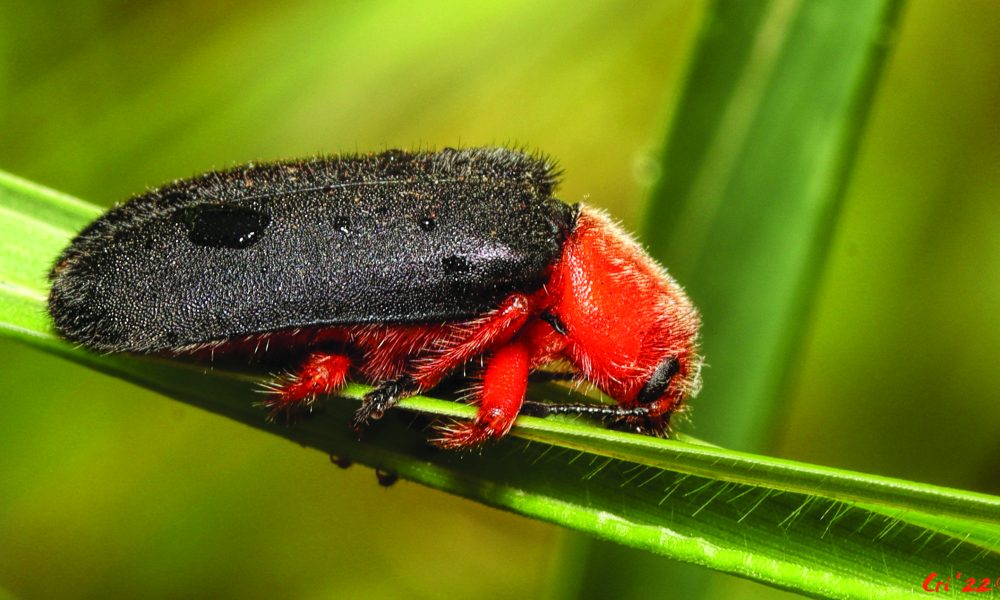Christy Pitto
This week’s crawly is bold and beneficial. Meet Chariessa elegans, a checkered beetle. While they don’t have a common name, we’ll call them the “elegant checkered beetle” for simplicity; “elegant” for short.
Checkered beetles are in the Family Cleridae, a family with at least 300 species in North America. While elegant sports solid, bold colors, most checkered beetles do have a checkered pattern.
Our elegant beetle is in the Subfamily Peloniinae and the members of this family evolved away from the gingham look and into the “eat me and die” look, but it’s all an act. Our elegant friend and their closest relatives evolved to mimic aposematic critters.
Apo- what now? “Aposematic” is an adjective which means “Being conspicuous and serving to warn”. Bold colors in nature, especially red and black, usually signal that an animal is poisonous and eating it means death to the predator who tries.
Elegant aren’t poisonous at all, but predators don’t know that and will pass them over for a safer-looking meal.
Elegant are predators themselves, especially in their larval stage. Their meal of choice are wood-boring insects. While not all wood-boring insects cause damage to living trees (many only bore into dead or dying wood), some do, and elegant help keep those “pest” populations down.
Elegant’s cousin, Chariessa pilosa, is a firefly mimic and specializes in munching on emerald ash borers, an invasive beetle decimating eastern elm tree populations and making their way to the West. To date, the closest they’ve been found to our area is Colorado.
Presently C. pilosa is only found in the Eastern United States, but if ash borers somehow get to our area (many people/agencies are working very hard to keep that from happening), C. pilosa might be imported as biological control.
Elegant is a western species and adults can be seen from late spring to early summer. Generally, they’ll be found on or near trees, especially dead or dying trees. The adults will eat pollen and pollinate flowers so you may also see one posing on a posey.
Our pictured elegant was hunkered down on some grasses riding out one of our recent rainstorms. That bright warning coloration makes them easy to spot.
Elegant spends their adult life eating wood-boring beetles, and some pollen. They even scavenge if necessary. They’re also out looking for mates so they can start the next generation of elegants.
Females will lay their eggs in the bark of a tree where there are existing wood-boring insects, eggs and/or larvae. They want to get their eggs as close to a food source as possible. Elegant larvae will eat both the eggs and larvae of the wood-borers.
The larvae will pupate either in soil, or in the empty brood cell of the wood-boring beetle after they’ve dined on the eggs and/or larvae. They do make themselves right at home.
Adult elegants have impressive mandibles (bitey mouth parts) for their size (just over one-half inch). They can use these both to expand holes in bark for egg-laying and for breaking up adult wood-boring beetles into bite-sized bits.
If they feel threatened they can also give a human finger quite a pinch, so they are one of our “Look, don’t touch” crawlies.

